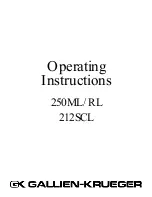
1
Introduction
Plastic Mold Compound
Exposed Thermal Pad Located
Underneath the Package
Die Attach (Epoxy)
IC (Silicon)
Leadframe (Copper Alloy)
Application Report
SLOA122 – July 2006
QFN Layout Guidelines
Yang Boon Quek
........................................................................................
HPL Audio Power Amplifiers
Board layout and stencil information for most Texas Instruments (TI) Quad Flat No-Lead (QFN) devices is
provided in their data sheets. This document helps printed-circuit board (PCB) designers understand and
better use this information for optimal designs.
The QFN package is a thermally enhanced standard size IC package designed to eliminate the use of
bulky heat sinks and slugs. This package can be easily mounted using standard PCB assembly
techniques and can be removed and replaced using standard repair procedures.
The QFN package is designed so that the lead frame die pad (or thermal pad) is exposed on the bottom
of the IC (see
Figure 1
). This provides an extremely low thermal resistance (
θ
JC
) path between the die and
the exterior of the package.
Figure 1. Section View of a QFN Package
SLOA122 – July 2006
QFN Layout Guidelines
1
Submit Documentation Feedback

























